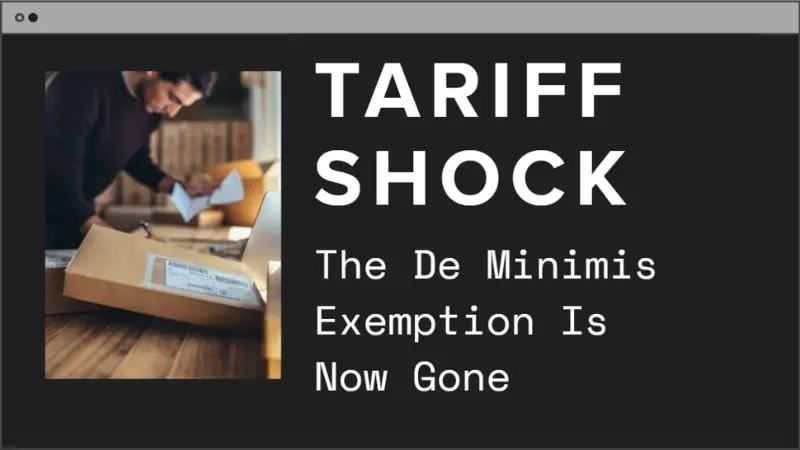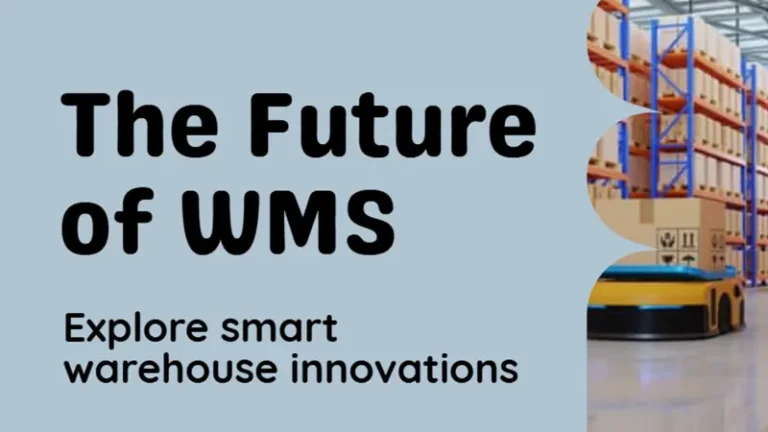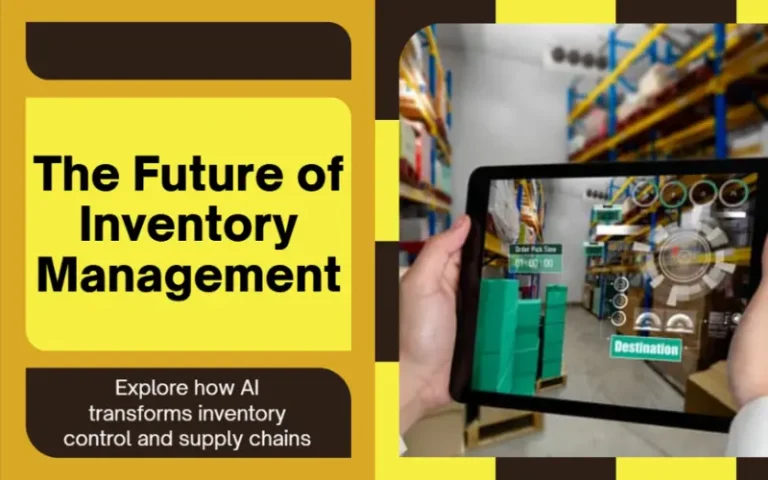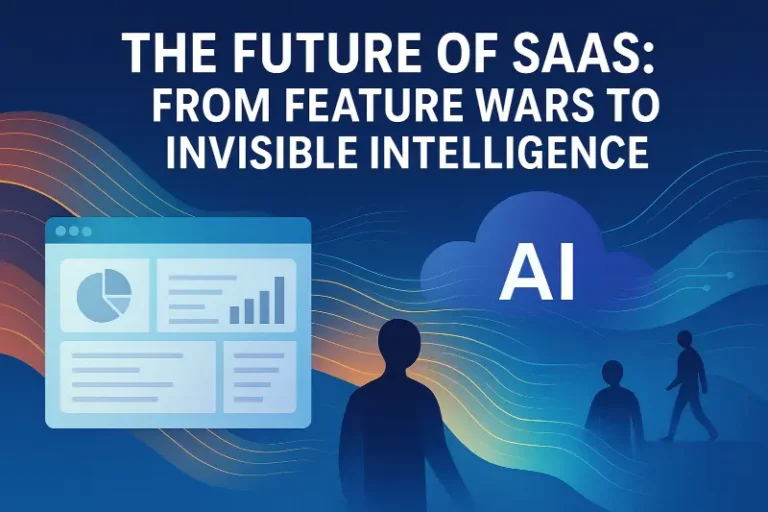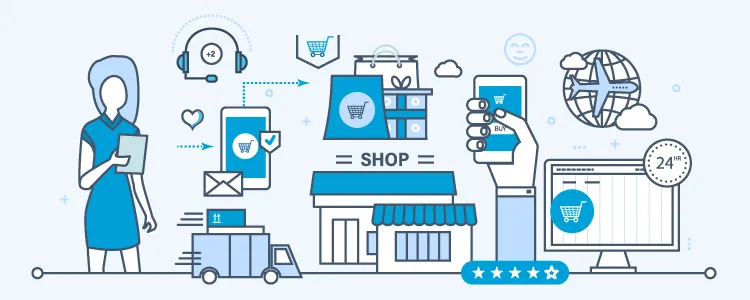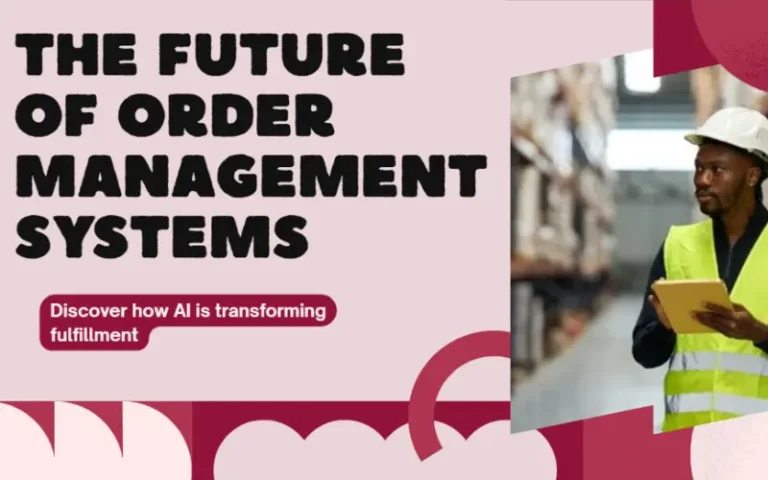Tariffs Are About to Hit Your Ecommerce Business Hard
In this article
 8 minutes
8 minutes
- Key Takeaways
- What Just Changed, and When Exactly?
- Why This Feels Like a Total Ambush
- Why It’s Bigger Than Ecommerce
- Real-World Example: The Etsy Seller Nightmare
- Real Costs of Making Things in the U.S.
- Backlog, Delays & the Holiday Spiral
- The July Ecommerce Spike, Front-Loaded Inventory or Prime Day?
- Holding Costs Hit Hard
- Putting This in Perspective
- What Ecommerce Operators Must Do Now (Seriously)
- Bonus Insight: SMBs vs. Giants
- Frequently Asked Questions
Brace yourself. Today, August 29, 2025, the U.S. scraps the de minimis exemption, meaning even tiny low-cost international packages will now face tariffs. Yeah, that includes your $20 gadget or your $50 pair of drop-shipped sneakers, and it’s going to hurt.
Brace yourself. Effective today, August 29, 2025, the U.S. scraps the de minimis exemption, meaning even tiny low-cost international packages will now face tariffs. Yeah, that includes your $20 gadget or your $50 pair of drop-shipped sneakers, and it’s going to hurt. Not just ecommerce merchants, either. This is effectively a consumption tax hitting millions of households, retailers, and supply chains all at once, and it will ripple across the broader U.S. economy.
Key Takeaways
- Aug 29 launches tariffs on all low-value imports. No more duty exemption.
- Global postal avenues are paused. Customs is flooded. Delays are coming.
- Small merchants are squeezed. Bigger ones shored up with U.S. stock.
- Inventory strategies need an overhaul: storage, pricing, sourcing, and communications.
- Ecommerce penetration is weak. Margins are under attack. Adapt, or risk going under.
Slash Your Fulfillment Costs by Up to 30%
Cut shipping expenses by 30% and boost profit with Cahoot's AI-optimized fulfillment services and modern tech —no overheads and no humans required!
I'm Interested in Saving Time and MoneyWhat Just Changed, and When Exactly?
Starting today, Friday, August 29, 2025, any international shipment heading into the U.S. (nope, not just leaving origin), regardless of how cheap, will be slapped with new costs. You’re looking at 10% – 50% duties, or an $80 – $200 flat handling fee per package. That’s a massive operational change.
Timing-wise? It doesn’t matter if a package leaves just before midnight UTC; you’re still on the hook once it arrives or is processed on/after Aug 29. Customs doesn’t care about your origin timezone; they use U.S. entry or postmark dates.
Why This Feels Like a Total Ambush
OK, the Trump administration has been choreographing this move for many months now (and it started with President Biden in Q4 2024). But it’s also been postponed and postponed. So, everyone has been in “wait and see” mode. Now, mail services worldwide have freaked out. Postal carriers in Mexico, the EU, India, Australia, and more have halted or paused shipments to the U.S. due to confusion and a lack of tools for tariff collection. That’s not a minor blip; that’s a supply chain scream. Shouldn’t the infrastructure be in place long before the new legislation goes into effect?
And it’s not just online sellers who get squeezed. When customs systems clog up, that affects everyone: apparel retailers waiting on seasonal imports, tool distributors holding back orders, and even general merchandisers like Walmart or Target. Add it up and you’ve got a new inflation driver at the exact wrong time; households already pinched by high grocery and rent costs are now staring down higher prices on imports across the board.
Why It’s Bigger Than Ecommerce
It’s tempting to frame this as an ecommerce headache. It isn’t. It’s a systemic shock that touches the entire economy.
- Supply chains clog up → Customs delays don’t care if it’s an Etsy pin or 10,000 drills headed to Home Depot. Backups hit everyone.
- Inflation pressure rises → Tariffs are a tax. Higher landed costs mean higher shelf prices. Even if sellers eat some of it, retailers eventually pass it on, right into household budgets already stretched by food and rent inflation.
- Retail + logistics ripple → Apparel, electronics, packaged goods, any category that leaned on cheap overseas fulfillment just lost competitiveness. Logistics providers get caught in the crossfire, rerouting shipments and charging more.
- Macro slowdown risk → Stanford economists warn these tariffs will directly feed inflation, dragging down consumer confidence and GDP. That’s why Etsy and eBay shares tanked the moment the news broke. Investors know it’s not just about small packages; it’s about overall spending.
So when you see tariffs called a “new inflation driver,” don’t file it under “ecommerce news.” This is a broad economic headwind. Ecommerce just happens to be the first and most visible test case.
Real-World Example: The Etsy Seller Nightmare
Take a small Etsy artist selling enamel pins made overseas. Last week, a $15 order meant low shipping costs, zero customs, and a happy customer. Starting next week? The same $15 pin could hit $45 after tariffs, or get buried in customs for days. Many international sellers are shutting off U.S. listings entirely, just until clarity returns.
And it’s not just pins. The same math applies to low-value, high-volume imports like nail art kits, USB cables, or cheap toys. Tariffs don’t discriminate by category; they crush unit economics whenever a flat $80 – $200 fee gets applied to something that used to move freely.
Meanwhile, big dogs like Shein and Temu have been stockpiling U.S.-based inventory for weeks, preparing for this cyclone.
Looking for a New 3PL? Start with this Free RFP Template
Cut weeks off your selection process. Avoid pitfalls. Get the only 3PL RFP checklist built for ecommerce brands, absolutely free.
Get My Free 3PL RFPReal Costs of Making Things in the U.S.
Let’s zoom in and do quick math for some known commodities. These aren’t exact price tags but directional benchmarks that show the gap between import cost and known domestic production:
| Item | Imported Cost | Estimated Domestic Cost |
| Mid-weight hoodie | ~$25 | ~$50–$70 |
| Hand-held power tool | ~$40 | ~$75–$100 |
| External SSD, 1 TB | ~$80 | ~$120–$150 |
The signal here is clear: domestic manufacturing is usually 2 – 3x more expensive once you add labor, compliance, and overhead. Yes, you can avoid tariffs by making things in the U.S., but you’ll pay more upfront. Sellers face trade-offs: raise prices, squeeze margins, or rethink their product strategy entirely.
Think of it as a proxy for category pressure:
- Apparel → doubling costs devastates fast-fashion models.
- Tools → U.S.-made brands already command a premium; imports compete aggressively for a reason.
- Electronics → domestic production is scarce, so the gap highlights dependence on Asia.
The broader point: this isn’t just about “cheap junk.” It’s about core consumer categories: clothes, tools, computing gear, all facing pricing pressure at once.
You lose price edge, fast. U.S.-made quality might justify higher prices, but forget about competing in cost-sensitive categories like fashion, gadgets, or lifestyle gear.
Backlog, Delays & the Holiday Spiral
Customs is backed up. Delays of days or even weeks are likely. You may hear horror stories: “Your package got destroyed, no notification.” It’s not entirely apocryphal. With new rules and overwhelmed operations, no-shows (auto rejections, destroyed parcels) and zero follow-up are real concerns. Some carriers already operate that way.
Now imagine this creeps into the 2025 holiday season. Brands that didn’t front-load inventory by late summer are going to find empty virtual shelves and customer churn.
The July Ecommerce Spike, Front-Loaded Inventory or Prime Day?
July’s blistering sales? Maybe not entirely Prime Day hype. Anecdotally, a bunch of merchants ordered inventory early to dodge this tariff tsunami. So yes, July looks great, but many were just building stock coverage. That likely bumps Q4 cost‐of‐goods significantly and ties up cash for longer. Holding fees, insurance, longer fulfillment cycles… it all adds up.
Holding Costs Hit Hard
If you’re holding inventory earlier, expect your cost structure to morph. Here’s a quick breakdown of what’s eating at your margins:
- Storage fees (AKA “why am I paying more for shelf space?”)
- Capital tied up (less liquidity)
- Handling & restock labor
- Insurance + spoilage/obsolescence (trends shift faster now)
- Inventory management complexity (new SKUs, forecasting shifts)
- Risk of returns/refunds stretched over holiday returns windows
Those skinny margins, beloved by fast-fashion and gadget dropshippers? They might vanish this season.
Putting This in Perspective
Online sales are not booming. Ecommerce penetration has sunk back to about 10% of retail, pre-COVID levels. Discretionary purchases are flattening thanks to inflation. That candy bar that used to be $1 is now nearly $2.50. Same size. This change is just more pressure in a season where consumers are already cutting back.
Scaling Made Easy: Calis Books’ Fulfillment Journey
Learn how Calis Books expanded nationwide, reduced errors, grew sales while cutting headcount, and saved BIG with Cahoot
See Scale JourneyWhat Ecommerce Operators Must Do Now (Seriously)
Time to get your house in order. If you’re not already doing these, desperation may be coming:
1. Stock smarter: Factor in tariffs, delays, insurance, and storage. Build extended-lead-time buffers now.
2. Diversify sourcing: Nearshore, U.S. manufacturing, or multi-origin shipping. Don’t rely on one geography.
3. Update pricing transparently: Communicate customs fees to customers. No surprises = less churn.
4. Negotiate with carriers: Who can pre-clear customs, who can absorb duties, and who won’t? Don’t assume everyone’s the same.
5. Leverage warehousing: Hybrid models: overseas for baseline, U.S. warehouses for flexibility and safety stock.
6. Focus on community & retention: When acquisition costs rise, existing customers matter more. Think retention-driven, not growth-at-all-costs.
7. Keep margins visible: Use cash-first accounting. Know your true landed cost after fees, storage, and burn rates.
Bonus Insight: SMBs vs. Giants
Small margins and thin buffers mean many SMB stores in low-price tiers might not survive. At the same time, this plays directly into Cahoot’s DNA, and we help shift from fragility to resilience. If you’re watching costs inch tighter, it’s time to lean on the systems, automation, and planning muscle we built with you.
Frequently Asked Questions
When does the de minimis exemption end?
August 29, 2025, any international parcel processed or shipped on/after this date gets taxed.
What are the new 2025 tariff ranges?
10% – 50% of the value, or $80 – $200 flat fee for six months.
Can small sellers cancel U.S. shipping temporarily?
Yes, many are pausing until clarity returns. But remember that’s also lost revenue.
Is this just a shock or a lasting change?
Likely lasting. Reinstating de minimis would require substantial political pressure.
How should merchants communicate cost changes?
Be transparent. Use simple tooltips (“international duties may apply”) and clear shipping pages.

Turn Returns Into New Revenue
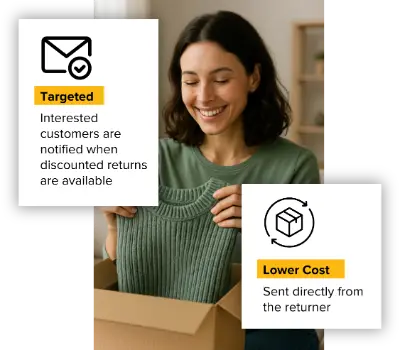
The New Role of Order Management Software in Inventory Optimization, Customer Satisfaction and Profit Margins
According to Boston Retail Partners’ 2016 POS/Customer Engagement Survey, 85% of retailers indicate that unified commerce is a top priority.
Why? Customer expectations are increasing every day. For example, according to Forrester Research, 25% of online shoppers now expect to be able to buy online and pick up in stores (aka Click and Collect).
It’s becoming impossible to follow customers as they skip across sales channels, first researching online, then buying in a store, then calling a contact center for help – back and forth and back and forth.
Current systems can’t keep up. Most mid-market retailers are running one system for the Point of Sale (POS), another for inventory, another for ecommerce, and still another for warehouse management and fulfillment & shipping. Which one do we go to when the customer calls about an online order? What happens when the contact center rep is asked, “which store has the item in inventory?”
In real life? That contact center is logging in and out of one system after another, trying to figure out how to handle the issue.
Boston Retail Partners suggests that, to create a single unified platform using the systems already in place, the most important component is to add a middleware layer, Order Management Software, that connects the dots.
In our white paper, we outline the critical new role that order management software plays in:
- Optimizing inventory
- Improving customer satisfaction
- Increasing profits
It includes the compelling case study of a growing mid-market retailer that implemented an OMS to dramatically change the trajectory of their business on all 3 fronts – inventory management, customer satisfaction, and profits.
Slash Your Fulfillment Costs by Up to 30%
Cut shipping expenses by 30% and boost profit with Cahoot's AI-optimized fulfillment services and modern tech —no overheads and no humans required!
I'm Interested in Saving Time and MoneyDownload it now to learn why mid-market retailers are turning to Order Management Software to optimize inventory, improve customer satisfaction & increase profits.

Turn Returns Into New Revenue

5 Hidden Costs to Avoid When Buying an Order Management System (OMS)
Choosing The Right Order Management System (OMS) Isn’t Easy
A modern OMS typically orchestrates order fulfillment while optimizing inventory management across all sales channels and fulfillment centers. In order to do so, an OMS is usually integrated, often via APIs, with a merchant’s ecommerce platform, POS, WMS, ERP and more.
Get a new implementation right the first time, and you’re a hero.
With your heroism in mind, we’ve published a whitepaper that will help you uncover 5 hidden costs to consider before choosing an OMS. It’s common for surprise issues to arise that slow down a software implementation’s pace, or increase expenses, or both. Even with detailed research and requirements development, we simply don’t know what we don’t know.
Order Management System (OMS) implementations can carry the same risks. The key to avoiding them is to uncover the potential surprises before purchasing the software. We’re here to help.
Slash Your Fulfillment Costs by Up to 30%
Cut shipping expenses by 30% and boost profit with Cahoot's AI-optimized fulfillment services and modern tech —no overheads and no humans required!
I'm Interested in Saving Time and MoneyAs Order and Inventory Management Software implementation experts, we’ve learned from our clients that there are a handful of potential land mines to sidestep that many don’t consider in advance.
Our free white paper covers the 5 hidden costs to avoid when buying an OMS:
- Too Many Irrelevant Features – Paying for features and upgrades far afield from Distributed Order Management that you just don’t need.
- Poor Technical Support – Learning that basic (or premium) training and support is actually less than basic.
- Overlooking Bonus Features – Missing the chance to get capabilities you need that are just outside a traditional OMS platform’s feature set.
- API is Underdeveloped – Paying more for integration than anticipated.
- Slow Performance – Discovering that uptime and latency are sub-par.
The white paper covers each in great detail, answering questions like:
- What are the hidden costs?
- How can they be identified in advance?
- And how can they be avoided?
While a detailed Order Management System RFP Template can help you evaluate the feature set, you’re still going to have to pressure test technical support, APIs and performance. Our whitepaper will tell you how to do so, efficiently and successfully.
Looking for a New 3PL? Start with this Free RFP Template
Cut weeks off your selection process. Avoid pitfalls. Get the only 3PL RFP checklist built for ecommerce brands, absolutely free.
Get My Free 3PL RFP

Turn Returns Into New Revenue

Which OMS is Best for Me? Home Grown, On-Premise, or SaaS?
SaaS solutions are the darlings of the tech community, growing at the direct expense of premise-based software. This is certainly true for Order Management Systems (OMS). Yet premise-based solutions still make up half of the OMS market. And some companies are still building their own homegrown solutions.
Why?
There are good reasons for each. And we’ve recently published a white paper that can help you decide which approach makes the most sense for your organization. It’s titled, “Home Grown, On-Premise, or SaaS: Which OMS is Best for Me?”
The right choice between build vs. buy, or between a SaaS and a premise-based solution, depends on the needs and capabilities of each individual business.
Answering a handful of questions can help a mid-market merchant decide which approach is best for their business:
Slash Your Fulfillment Costs by Up to 30%
Cut shipping expenses by 30% and boost profit with Cahoot's AI-optimized fulfillment services and modern tech —no overheads and no humans required!
I'm Interested in Saving Time and MoneyBuild vs. Buy
- Does my company have unique, differentiating needs that are not supported by off-the-shelf OMS solutions? Can they be supported with customization?
- Is software development a core differentiator for our business? Is it an area in which we can afford to focus?
SaaS vs Premise-Based
- How much customization makes sense for my company? Are we customizing our OMS to meet unique needs? Or are we customizing to make up for a lack of basic core infrastructure?
- How strong is our data center? Can we match the enterprise strength data centers of a SaaS provider? Is that a cost we want to manage on our own?
The answers usually depend on a company’s size.
- SaaS is typically best for mid-market merchants that don’t yet have the scale to manage a state-of-the-art data center and differentiate based on their product selection, pricing, merchandising, and service – not on their technology.
- Premise-based solutions, more easily customizable, yet more expensive to manage, are more appropriate for larger companies, in the $500mm+ revenue range. These retailers have more complex infrastructure, have more custom needs, and have the scale to manage a top-notch data center.
- Homegrown solutions, even for the largest merchants, must be core to their differentiation. The expense of building software that others have already built for a large audience, must be justified by a significant bottom line opportunity.
You can learn much more by downloading our whitepaper, “Home Grown, On-Premise, or SaaS: Which OMS is Best for Me?” Whether you’re going to build, buy an on-premise solution, or rent a cloud-based solution, our can help you decide which features to include in your requirements.

Turn Returns Into New Revenue


